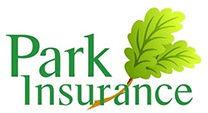Last week we took a quick look at what you need to consider when buying a hitch-and-tow horsebox, including everything from condition and tyres through to horsebox insurance and security.
This week, we gallop our way through the next set of things to check, but this time for motorised horseboxes. Are you qualified to drive a horsebox? Does it meet all the legal requirements to be on the road? And is it really what you need, or would a hitch-and-tow be sufficient? Here’s our top five list:
#1 – Do you have the right licence?
Unlike towing (which is also subject to some licensing restrictions), you will need to ensure that you have the right category of licence to be able to drive some motorised horseboxes. Yes, you can get ‘transit van’ horseboxes, but if you’re going for a full-sized box then you will need to make sure you are allowed to drive it on the road. The different types of boxes are:
- Small rigid Horseboxes between 3.5 and 7.5 tonnes (a C1 entitlement required)
- Small rigid Horseboxes towing trailer (C1+E entitlement required)
- Large Rigid Horseboxes over 7.5 tonnes (C entitlement required)
- Very large articulated Horsebox combinations (C+E entitlement required)
If you do need additional training and have to take an enhanced test, contact a local driving school that specialises in horseboxes and HGV requirements.
#2 – Is the engine a filly or an old nag?
Just like any motorised vehicle, a horsebox is only as good as its engine. If you’re not confident about checking under the bonnet for yourself then make sure you take someone with you who really knows about engines. Also remember that while it may sound ‘sweet’ when it’s ticking over parked up in the yard, things could change very quickly when you put it ‘under load’ with a couple of half-ton horses in the back! Check its service history and keep a close eye out for any obvious signs of tampering. Also ensure that the engine number and chassis numbers correspond with those printed on the log book.
#3 – Is it roadworthy?
Motorised horseboxes have to pass an MOT just like any other road-going vehicle. The better the condition of the box you buy, the less additional cost you’re going to have to pay out in expensive repairs. It could also be, quite literally, a matter of life and death for you, other road users and your animals. So it’s absolutely essential to check that the horsebox you buy is fully roadworthy and has an up-to-date MOT certificate.
#4 – Do you have somewhere safe to store your horsebox?
A motorised horsebox is a very expensive investment, so make sure you have a secure area to keep your vehicle, preferably with off-road parking or even a secure barn. At the very least you should fit immobilisers, alarms and take every precaution to protect your investment.
#5 – Can you afford to run a motorised horsebox?
Running a motorised horsebox is like running expensive car – and then some! As well as the usual costs such as horsebox insurance, fuel and maintenance, you will also have to take into account depreciation if you decided to sell it on. Make sure you have the funds in your budget not just to be able to afford to buy a motorised horsebox, but to run it too.
